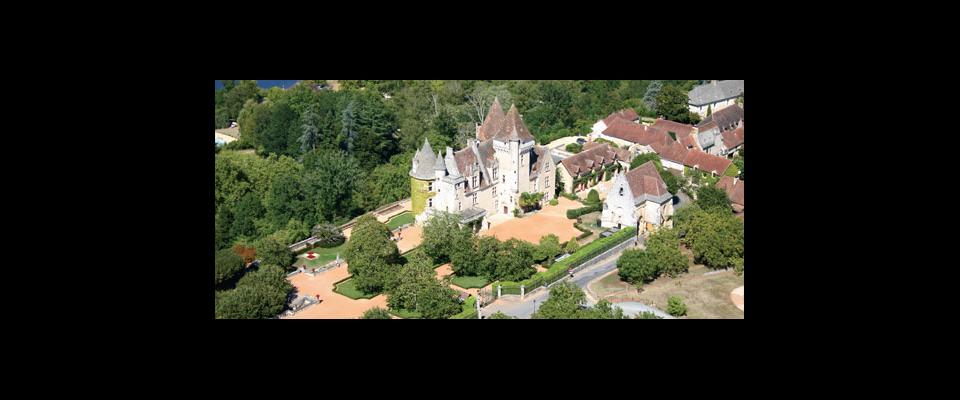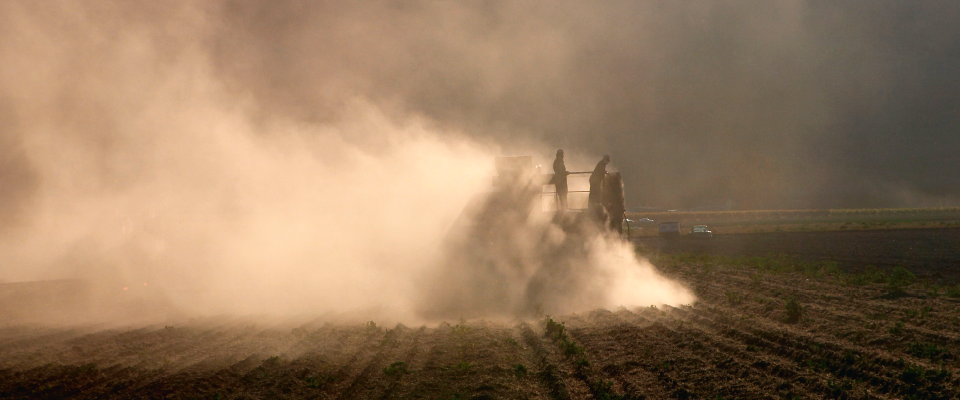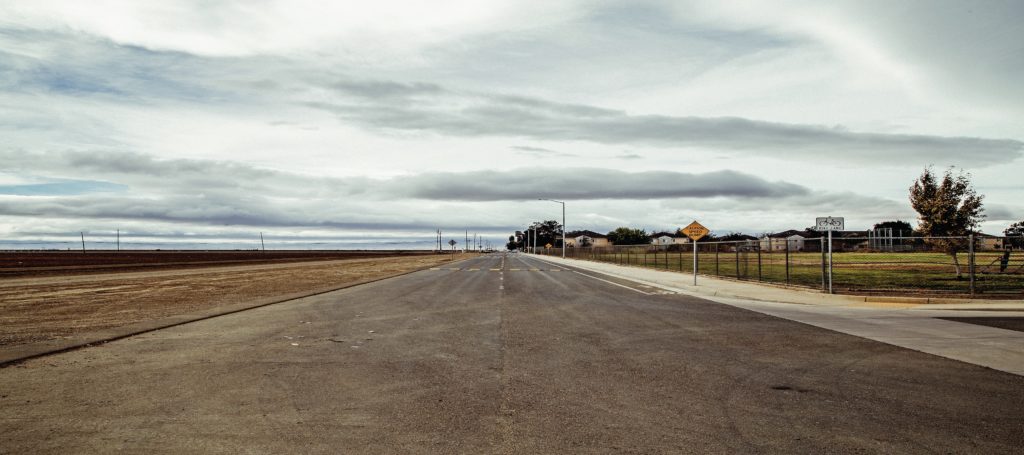Southwest France’s central Dordogne River valley is filled with imposing medieval castles built not for pleasure, but to defend the region during the Hundred Years’ War. However, as you make your way down the valley, just west of the village of Sarlat, you may catch sight of something a little different: a Renaissance castle with fanciful turrets and many windows, glistening on a hilltop, as if in a fairy tale. Follow the road to Château des Milandes and you’ll be treated to quite a tale indeed.
The château was built to suit a woman’s tastes. In the late 1400s, after the war had finally drawn to a close, the wife of the ruling lord, François de Caumont, grew weary of living in Château Castelnaud, which commands the valley from a nearby cliffside. It had served its purpose in wartime but now seemed forbiddingly cold and dark. In response, her husband built another large château with pleasure gardens and windows offering panoramic views. Centuries later, in the 1930s, entertainer Josephine Baker fell in love with the château while vacationing in the Dordogne. As an African American, she had suffered segregation during her impoverished childhood, but at 19 had traveled to France and became an overnight sensation, entrancing Europe with her nearly nude dances. A woman of extremes and impulsivity, Josephine reinvented herself regularly, taking flying lessons, collecting exotic animals from all over the world, and writing five biographies that were as contradictory as they were colorful. The château fit perfectly into her whimsical life and she decided she must have it. When she learned its name was Les Mirandes, she quickly changed that to Les Milandes because she had difficulty with the French r.
Living in France, said Josephine, she was treated as a full human being for the first time, able to eat where white people ate, to sleep where they slept. Just as she would do anything to please a crowd as a performer, she would do anything to serve France. She even spied for France during World War II, her celebrity providing the ideal excuse to travel the world and receive dignitaries. For such a woman, it would have been unthinkable to simply buy a château and leave it at that—she had to have the village beneath as well. Before long, she decided to create a theme park celebrating multiethnic harmony. It would be a village du monde, where she would prove that people of all races and religions could live together in harmony. All she needed was the people, and she had a plan for that, too.
In the early 1950s, Josephine wrote to an orphanage in Japan, which gave her two boys, of Japanese and Korean parentage, and she set about securing their proper religious and language instruction. Then she left Les Milandes to lecture in Scandinavia, and came home with a boy from Finland. After that, she toured war-torn Algeria, adopting two children—a Catholic and a Muslim—left behind after a village massacre. Eventually she had 12 children of diverse backgrounds. When necessary, Josephine fudged the facts. Israel refused to hand over a Jewish child for her project, so she adopted a boy from a nearby orphanage and converted him, procuring a tutor of Hebrew and the Torah and hiring a chef to keep the child kosher. The children lived in the château with their retinue of nannies and instructors while Josephine toured constantly to support the massive project. She would return from her travels with arms full of gifts, and animals that were added to the theme park. Thousands came from all over the world to eat, drink, and dance, and to see the famous “Rainbow Tribe” and Josephine, the “Universal Mother.”
Les Milandes was not an economic success, however. It seemed that as soon as Josephine had an idea, however unlikely, she was compelled to see it made real. If she wanted a model farm, there would be a model farm. If she wanted a bakery, there would be a bakery. And when she thought up a wax museum depicting the many dramatic stages of her life—complete with a display depicting herself as the Virgin Mary leading the Rainbow Tribe to salvation—it had to be done. She ignored her accountant, who warned that she was running out of money and would lose Les Milandes. In 1964, he was proven correct when creditors seized the château. Sympathetic investors bailed Josephine out and demanded that she scale back, but she refused, plowing ahead with further renovations. In 1968, the château was finally sold out from under her. The new owner changed the locks, but she sneaked in through a window and barricaded herself inside the kitchen with her cat for hours. When she was finally thrown out, the image of a bereft Josephine sitting on the steps outside her kitchen, wearing a headscarf and simple clothes, was plastered all over the French newspapers.
As a biographer of Josephine Baker, I was always skeptical of her project at Les Milandes. Something about the way she traveled around the world, picking out children like a curator of humans, struck me as a bit extravagant. I thought of her life as a cautionary tale for anyone infected with too much enthusiasm for our own crazy whims. My opinion was changed, though, upon my first visit to Les Milandes—the château has been taken over by a family devoted to continuing her humanitarian legacy, and their own enthusiasm for the project is infectious. Josephine’s possessions were strewn across Europe during her life and after her death, but Henry and Claude de Labarre and family have made it their business to assemble and restore them, and to use them to tell Josephine’s story.
I arrived at the château in mid-November, after most of the region’s attractions had closed down for the season, and was greeted by the de Labarres’ daughter, Angélique. She spent hours with me, leading me from room to room, speaking passionately about Josephine’s service to France and the fight against racism. Angélique pointed to a picture of Josephine at the 1963 March on Washington and told me reverently, “She was the only African-American woman who spoke that day.” As we toured, she periodically broke away to attend to the workers milling about (the château was immersed in an impressive array of renovations). She explained that it was this way every winter; the castle would close and the improvements would begin. This year, it was the boutique and café that needed revamping.
From Angélique’s perspective, Josephine’s story is a cautionary tale of a different kind, about a visionary so ahead of her time that the people she sought to enlighten were ultimately unable, or unwilling, to support her. We ended our tour in the kitchen because, Angélique explained, this is the last place Josephine stood inside Les Milandes before being thrown out. “She gave her life to France and to humanity, and when she needed help…people were not there for her.”





















